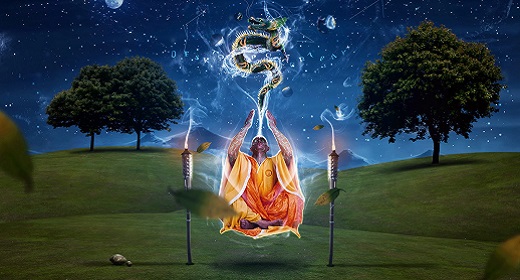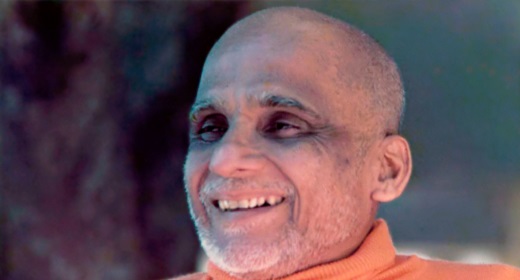by Steve Taylor PhD: Temporary and Permanent Awakening in Spiritual Traditions…

Many spiritual traditions make a distinction between temporary spiritual experiences and a permanent, ongoing experience of ‘wakefulness’ or liberation. In the Hindu Vedanta tradition, this is the distinction between nirvikalpa or savikalpa samadhi (usually seen as temporary) and sahaja samadhi (usually seen as a stable, ongoing and permanent state of samadhi) (Feuerstein, 1990). In Sufism, there is a similar distinction between fana and baqa (Spencer, 1963); likewise in Zen Buddhism, kensho and satori are comparable terms (Suzuki, 1956). In the Christian spiritual tradition, there is a similar distinction between mystical experiences, and mysticism as a permanent state, as in the state of ‘deification’ or ‘theosis’ (Underhill, 1960). Maslow (1970) made a similar distinction between the ‘peak experience’ and the ‘plateau’ experience, or between ‘peak experiences’ and the ‘self-actualised’ state.
What is the basis of this distinction between temporary ‘awakening’ experiences and experiences of permanent spiritual awakening? In a study of 161 temporary awakening experiences conducted by this author (Taylor, 2012b), the ‘temporary’ nature of the experiences was emphasised in descriptions of them ‘lasting’ a certain amount of time, and possessing a certain intensity which faded away, bringing a return to a ‘normal’ state of mind. For example, one person commented, ‘I was conscious of not wanting the feeling to go away. But unfortunately it didn’t last long’ (Taylor, 2012b, p.7).
Nevertheless, despite being essentially temporary, the experiences were reported as having long term effects. Although they did not bring a fundamental, deep-rooted shift of identity – or a permanent state of oneness or heightened awareness of the phenomenal world- many individuals described them as bringing a shift in perspective and attitude to life, and a change of values. For example, they were reported as bringing a new sense of optimism, trust, comfort or confidence (Taylor, 2012b). One person had an intense awakening experience following a period of intense psychological turmoil, during which she ‘felt the most intense love and peace and knew that all was well’ (Taylor, 2011, p.4). The experience probably only lasted for a few minutes, but in its aftermath she found that the feeling of dread had disappeared from her stomach, and she felt able to cope again. ‘I looked around and thought about all the good things in my life and the future. I felt more positive and resilient’ (ibid.). Another person simply reported that the experience made her realise ‘how easy it would be to be happy’ (Taylor, 2010, p.7)
For some, the memory of the awakening experience – and the knowledge that this dimension of meaning and harmony existed – had a comforting and reassuring effect. One person reported that her awakening experience ‘Only lasted a few minutes but I remember a sense of calmness and stillness and it soothes me now’ (Taylor, 2010, p.10). (The poet Wordsworth vividly described this soothing after effect of awakening experiences on several occasions. For example, in Lines Written A Few Miles Above Tintern Abbey, he describes his awareness that this ‘serene and blessed mood’ of the present will provide ‘life and food/For future years.'[Wordsworth, 2013].)
One of the most common after effects of awakening experiences is to create a desire to ‘return’ to this dimension of meaning and harmony, which often leads to an interest in spiritual traditions and practices. For example, in another awakening experience apparently triggered by psychological turmoil, a young woman experienced ‘a moment of enlightenment’ in which ‘all my “problems” and my suffering suddenly seemed meaningless, ridiculous, simply a misunderstanding of my true nature and everything around me. There was a feeling of acceptance and oneness’ (Taylor, 2011, p.8). This experience awakened a life-long interest in selfdevelopment. ‘In some ways’, the woman reported, ‘I have spent the last 25 years since exploring what it meant and how I could perhaps go back there’ (ibid.).
Similarly, one person reported how she had ‘spent my life searching for the feeling again because I know it’s there’ (Taylor, 2011, p.7). Another person described how, following her awakening experience, she felt drawn to books about spirituality, began to read about Buddhism, and learned to meditate (Taylor, 2011). While as a final example, a man who had a powerful awakening experience 40 years ago -without having any similar experiences- reported that this ‘tiny glimpse of my potential as a human being has had a huge impact on my life and work’ (Taylor, 2010, p.41).
The last quote recalls William James description of the ‘noetic’ quality of mystical experiences:
[Mystical experiences] are states of insight into depths of truth unplumbed by the discursive intellect. They are illuminations, revelations, full of significance and importance…as a rule they carry with them a curious sense of authority for after-time (James, 1985, p.380).
I suggest that this transformation of perspective and of values following temporary awakening experiences be termed a ‘secondary shift’, or ‘secondary transformational experience.’ The transformation may lead to significant cognitive and affective changes, with different values (e.g. less materialistic, more altruistic), different beliefs (e.g. belief in life after death) and a different attitude (e.g. more optimistic, more trusting). In turn, these may lead to significant lifestyle changes, such as new interests, new relationships and a new career. However, the ‘shift’ is still secondary in the sense that the individual’s previous ‘self-system’ and previous sense of identity remain intact. Since the individual’s ‘ego-boundaries’ remain essentially intact, he/she does not experience the intense connection or oneness or the intensified perception of the phenomenal world which awakening experiences frequently feature (Taylor, 2005; 2009; 2010; 2012b). These individuals experience themselves as the same continuous ‘ego-self’ as before, although they may possess a different ‘cognitive map’ of reality.
Temporary awakening experiences can be seen as a temporary ‘installation’ of a different, ‘higherfunctioning’ self-system’, which does not become established. Although temporarily disabled, the individual’s normal self-system is still intact as a structure, and so re-establishes itself.
The Primary Shift
It is tempting to describe this normal ‘selfsystem’ as a kind of psychic ‘mould’, which exists as a potential even when the system itself temporarily dissolves, so that it is able to re-form. In temporary awakening experiences, the structure is only in abeyance, with the mould still intact. But when permanent transformation occurs- in the form of a ‘primary shift’- not only the structure, but the ‘psychic mould’ itself dissolves away. It is replaced by a new psychological structure, or ‘self-system’, so that the individual does experience a new sense of identity. This shift is therefore more deep-rooted and fundamental. The person may feel that they have been ‘re-born’, even that the only real connection with their previous identity was that they are associated with the same body and name. At the same time, this transformation includes the characteristics of the ‘secondary shift’ described above. The new ‘self-system’ generates significant cognitive and affective changes, with different values, beliefs and attitudes. These typically occur to a more intense degree than a ‘secondary shift’ occurring alone (Taylor, 2011, 2012a, 2013).
This ‘primary shift’ can be seen as equivalent to the ‘awakening’. ‘liberation’ or ‘enlightenment’ described by various spiritual traditions -sahaja samadhi (in the Hindu Vedanta tradition), baqa (in Sufism), satori (in Zen Buddhism) and ‘deification’ or ‘theosis’ (in the Christian mystical tradition)1 .
In a recent study (Taylor, 2013), 25 individuals who believed they had undergone ‘permanent spiritual awakening’ were investigated. This study found that the ‘primary shift’ was most likely to occur in a sudden and dramatic form, rather than gradually. Of the 25 participants, 12 reported a sudden and dramatic awakening, with no previous knowledge or experience of spirituality. 7 reported a sudden and dramatic awakening, with some gradual development preceding this and some previous temporary awakening experiences, while 6 participants reported a wholly gradual process of transformation.
Most of these cases of ‘spiritual awakening’ occurred following periods of intense psychological turmoil, associated with events such as bereavement, illness, divorce and episodes of psychosis and depression. Many participants felt that their transformational experiences were triggered by this turmoil. Of the 25 participants, 9 reported psychological turmoil as the only apparent factor, while for 14 other participants it was reported as an important contributory factor. For 9 of these 14, some form of spiritual practice was also reported as a factor. In other words, these participants were engaging in some form of spiritual practice (in most cases, meditation) while experiencing psychological turmoil. In five other cases, participants were undergoing some form of psychotherapy (e.g. counselling, Hokami therapy –a form of bodywork– or the AA recovery process). Only one person reported experiencing transformation purely as a result of spiritual practice, including the reading of spiritual texts and studying with a spiritual teacher (Taylor, 2013).
When this shift occurred suddenly and dramatically, it was often attended with difficulties. Particularly if the person did not have a conceptual framework to help them make sense of their transformation (e.g. background knowledge of spiritual traditions and practices) and a supportive network around them, they were liable to become confused and to suffer psychological disturbances (Taylor, 2013). However, in most cases, the state did appear to become integrated and stable, even if this process took several years. (ibid.) Conversely, gradual transformations tended to be less beset by difficulties, and to occur in a more integrated and stable way.
This distinction between sudden and gradual spiritual awakening is similar to the distinction Grof (2000) makes between spiritual emergency and spiritual emergence. Whereas spiritual emergencies are sudden and dramatic, and often very disruptive to the normal self-system, spiritual emergences are more gradual and less disturbing. As Lukoff, Lu, and Turner (1998) note, ‘In spiritual emergence…there is a gradual unfoldment of spiritual potential with minimal disruption… whereas in spiritual emergency there is significant abrupt disruption in psychological, social and occupational functioning’ (p. 38).
All 25 participants -both sudden and gradualreported a shift into a new psychological state, with a new sense of identity. One described this as ‘a shift in consciousness and in identity’ and noted that she felt so different that when she returned to her home town she was ‘fully expecting to walk into the room and for family and friends not to recognise me. I felt so different, like a completely different person to be honest. All my internal frames of reference have changed’ (Taylor, 2013). Another participant reported, ‘I’m in many ways a different person now, living a different life’, while another simply stated, ‘I feel like a different person’ (ibid.). In answer to the question, ‘Do you think the transformation is permanent?’, another participant stated, ‘It’s like saying, is birth permanent? There are some things that are done and can’t be undone’ (ibid.).
All participants believed that this new psychological state was permanent, or at least ongoing. They reported it as fairly stable, although with some fluctuations and difficulties. One participant stated, ‘I can tell you that it feels stable. It’s been about three years now and it feels stable’ (Taylor, 2013). A small number of participants were initially worried that the state would fade away, but were reassured by its stability. One reported, ‘I worried that one day I would wake up and it would hit me like a brick, but it is permanent and I feel like I am in a growing developing phase at the moment, its not over yet’ (ibid.). In some cases a significant amount of time had elapsed since the transformation, but these participants did not believe it had faded. Two participants had begun a process of gradual spiritual development more than 20 years ago, while another had experienced sudden transformation 21 years ago. For 7 others, it had been between 10-19 years since their transformational experience, or since the onset of their gradual development.
As the quote above suggests, although all participants felt they had undergone a permanent shift, some believed that the state was not finite, not the end point of their development. As another participant put it, ‘I think it’s kind of raised me up a level if you like. It’s really a building block for me to move from’ (Taylor, 2013).
This deep-rooted identity led to major psychological changes, and major lifestyle changes. The participants experienced new modes of cognition and perception, a new relationship to their surroundings and to other human beings (including increased authenticity and compassion) and new values (including a less materialistic attitude and increased altruism, in some cases leading to a change in career). A thematic analysis showed that the three most prevalent reported characteristics of their new states were wellbeing/positive affective states, an increased ‘presentness’ (including the ability to ‘do nothing’) and a sense that this state is ongoing and stable (and possibly permanent). All 25 participants reported these characteristics. While other major codes, mentioned by 20 or more of the participants, were ‘Reduced cognitive activity/Less identification with thoughts’ (which many participants reported as having a ‘quieter mind’ than before), a ‘Reduced/Disappearance of fear of death’ (including a sense that life will continue in some form following the apparent death of the body); ‘Decreased sense of group identity/need for belonging’; ‘Episodes of intense turmoil or trauma immediately preceding transformation’; and ‘Sense of Connection’ (Taylor, 2013).
The study found that this ‘primary shift’ into a new psychological structure was most likely to occur following periods of intense psychological turmoil or stress, leading to a dissolution of the person’s normal self-system. This was associated with many different types of turmoil and stress, but common types were bereavement, depression, serious illness, addiction and/or encounters with death.
For example, one participant of this study described gradual spiritual development for around 18 months, while performing a meditative practice. Following this, he experienced a sudden shift which he described as ‘a change into silence when the mind quieted. It was the first time I was really aware of a palpable silence. And a lot of the busy-ness of my mind and the seeking energy fell away’ (ibid.) The next day, when he woke up he ‘felt like I was looking at the world from a place that was behind thought.’ This was followed, ‘three or four months later’, by a final transformational shift in which ‘Everything I looked at seemed to have no separate existence from what I was – he absence of all those dividing lines both in space and time. Space was just the dividing line between me and the floor or me and the door. It was as if the sense of time fell away, all those divisions of the past, present and future’ (Taylor, 2013).
In another example, a participant described how she felt she underwent gradual development while suffering from depression and post-traumatic stress disorder, during which she was aware of a process of ‘humbling or deconstructing the ego.’ During this period, she had what she described as ‘peak moments that changed the baseline going forward’, including one powerful experience in which ‘I opened my eyes and the world looked different. It was alive. It was infinite aliveness. Everything was bright. Even the space between everything. The colours were incredible and the flowers looked happy. I looked down and I realised I was the sidewalk.’ Following this, in March 2008, as she put it, ‘I moved into a stable state’ after participating in a personal development workshop (Taylor, 2013).
In another study (Taylor, 2012a), cases of ‘spiritual awakening’ following intense psychological turmoil or trauma were specifically investigated. In these cases, individuals typically reached a point where they felt they were completely ‘broken’ or desolate, and had lost everything. Often at the very point of accepting or surrendering to their predicament -the point of ‘giving up’, ‘letting go’ or ‘handing over’ their problem- they would feel something ‘give way’ inside them, and feel that a new self had emerged inside them, with new awareness and knowledge (Taylor, 2011, 2012a). In this study, it was suggested that this process was related to the dissolution of psychological attachments. Psychological attachments can include hopes and ambitions, the sense of status or achievement, wealth and possessions, social roles, and other human beings upon whom the person is emotionally dependent. The dissolution of these attachments is usually the main reason why a person is in a state of turmoil, and filled with a sense of despair or loss. Psychological attachments can be seen as the ‘building blocks’ of a person’s sense of identity. When the building blocks are taken away, the structure itself collapses. And this dissolution or collapse appeared to allow a new higherfunctioning ‘self-system’ to emerge and become established as the individual’s new sense of identity (Taylor, 2011, 2012a).
One participant of this study described her ‘primary shift’ in detail as follows:
‘The way it feels is that I’ve permanently broken through to another state. I’ve moved up to another level of awareness which I know is going to stay with me. One day, a shift occurs, and a different picture suddenly emerges showing you who you really are –an eternal being, far more powerful and amazing than you ever thought possible. I knew without doubt that I’d witnessed the absolute truth and, having experienced it with such clarity, there’s no going back. It’s like the transformation a caterpillar goes through during the chrysalis stage before emerging as a butterfly…
Now I spend a lot of time in the present. In the past, when friends came round and told me about their problems, I’d get really involved, but now my awareness is somewhere else. When I’m with them, I can feel this white light inside me. I can open my heart and let it flow out. Nothing upsets me the way it used to. Nothing fazes me. I know how to make stressful situations pass, by not focusing any emotional energy on them.
Material things don’t interest me anymore. I used to like home comforts, but now I hate having things I don’t need. I feel more inclined to give things away. I have no need for them. Behaviour –our thoughts and deeds– are much more important than material goods. I love being alone –just being still, going inwards. It’s ongoing –the deeper I go the more I realise– and the more I realise the more amazing it all is…
I have much less of a sense of a separate self. After my experience any opinions I’d formed previously about God/religion or other philosophies became irrelevant –there’s only One and we’re joined with it regardless.
When I lost my daughter I felt I’d gone to hell and back but after glimpsing heaven my grieving ceased instantly. There is only love; there’s no real pain or suffering or death. It’s impossible. My daughter could never leave me, except in the movie I’d constructed first in my mind which then played out in the outer world. Time only exists inside our cocoon, outside of it, eternity. She was always me and I was her. I am everyone, everyone is me, nothing is separate’. (Taylor, 2011, p.55).
The ‘Secondary Shift’ and Psychedelic Awakening
The notion of ‘primary’ and ‘secondary’ shifts will perhaps contribute to the long-standing debate on whether psychedelic drugs can be of value to spiritual development. One aspect of this debate is whether drugs can induce genuinely ‘spiritual’ experiences. Religiously oriented scholars of mysticism have doubted that this is the case, reluctant to accept that the experiences can be induced ‘artificially’, without divine assistance (e.g. Zaehner, 1957, 1972; Happold, 1986). This is not the place to debate this particular issue, which I have discussed elsewhere. (In Taylor, 2005 and Taylor, 2010, it is suggested that, although psychedelics can, under certain circumstances, induce genuine temporary ‘awakening experiences,’ there are also significant differences between them and temporary awakening experiences induced more organically, such as those related to relaxation and concentration, or to an ‘intensification and stilling of life-energy’.) The second strand of this debate is whether psychedelics can produce genuine permanent ‘transformative’ experiences. Are they simply temporary ‘glimpses’ into a ‘higher’ dimension, which fade away and leave the individual exactly as they were before, or can they bring about genuine transformation, or even enlightenment?
I would suggest that psychedelics can be transformative in the sense of generating a ‘secondary shift’, but not in terms of generating a ‘primary’ one. It has been well attested that psychedelic experiences can cause a long-lasting shift in perspective, creating new concepts of reality and an openness to anomalous or spiritual concepts (Conway, 1989; Strassman, 2001). This was illustrated by Pankhe’s ‘Good Friday Experiment’, in which 10 members of a group of 20 theological students were given doses of psilocybin, and experienced intense ‘mystical’ feelings and perceptions, including several powerful mystical experiences, similar to those of the great Christian mystics. In a follow up study six months later, 8 out of the 10 students said that the experience had had a powerful long term effect, deepening their sense of their spiritual and enriching their lives. And remarkably, this was still the case after 25 years, when most of participants reflected that the experience had changed them permanently, giving them a deeper appreciation of life and nature, an increased sense of joy, a reduced fear of death and greater empathy for minorities and oppressed people (Doblin, 1991).
In 2006, a study into the effects of psilocybin found that 60 per cent of the volunteers described characteristics of mystical experiences, with just over a third describing it as the most important spiritual experience of their lives, as significant as the birth of their first child. A follow up study two months later found that most participants reported that their moods, attitudes and behaviour had become more positive, while psychological tests showed that they had a significantly higher level of well-being compared to other volunteers who were given a placebo at the same session (Griffiths et al. 2006).
There have been similar findings in relation to Ayahuasca. As McKenna wrote, under the right setting and circumstances ‘regular and long-term hoasca [Ayahuasca] use may result in profound, lasting, and positive behavioral and lifestyle changes’ (2004, p. 122). McKenna cites the example of an Ayahuasca group whose members had a history of maladaptive behaviors such as alcoholism, substance and domestic violence. Following the regular use of Ayahuasca, this maladaptive behaviour disappeared (McKenna, 2004). Winkelman (1995) used the term ‘psychointegrator’ for Ayahuasca and other related plants, to describe their positive psychological benefits.
Other long term positive effects of psychedelic experience which have been identified include mental improvements, reduction or elimination of allergies, cluster headache prevention, anxiety relief and enhanced quality of life (Fadiman & Kornfeld, 2013). LSD has also been shown to have similar effects to Ayahuasca in relation to alcoholism. Several 1960s studies found a high recovery rate in alcoholics after psychedelic therapy, with roughly around 50% becoming long term sober, or drinking much less (Hoffer, 1970).
The transformative effects of Ayahuasca were described by a student of mine. Although he had had experiences of lucid dreaming he was ‘not very interested in anything remotely spiritual.’ He had a successful career as a computer programmer, and described himself as very materialistically oriented: ‘I was motivated by the money, the possessions, and the status that came along with “success”. I was very antireligious and I had donated money to the National Secular Society to support their work. My car was a very expensive “look at me” sports car.’
However, after taking Ayahuasca, his vision of reality and his values were transformed. After believing that he ‘knew it all’ he became aware of how limited his normal perspective was. As he describes it:
‘I saw that the seemingly endless desire for more money, things, and success, was not the key to happiness. My motivation changed to “give something back” to the world that had been so good to me. I retrained as a counsellor and worked as a volunteer with cancer patients at my local hospital. I became interested in “spirituality” and the underlying message of religion, and I donated money to the Lucidity Institute to support their work. My car is now an ordinary and very practical seven-seater. These changes have proved to be long term and the date of the experience, the 28th of January 2005, is as important to me as my birthday.’
As this experience and the others reported above show, the ‘secondary shift’ generated by psychedelics can be very powerful and valuable. Just as described earlier, in relation to awakening experiences in general, they can provide a glimpse into a new, hitherto unsuspected dimension of harmony and meaning, and ideally generate an impulse to return to that dimension, and to investigate spiritual traditions and practices as a means of doing so. As Huxley wrote of psychedelic awakening experiences, ‘The man who comes back through the Door in the Wall will never be quite the same as the man who went out’ (1988, p.64).
However, I believe it is unlikely –in fact, I am aware of no cases of this– that psychedelics can induce a ‘primary shift.’ That is, I have not come across cases of LSD, ayahuasca or any other ‘psychedelic’ substances generating a shift into a stable, permanent state of ‘enlightenment’, a permanent dissolution of the normal ‘self-system’ and its replacement with a latent ‘higherfunctioning’ self-system.
Of course, the ‘secondary’ shift generated by psychoactive substances could possibly lead to a gradual ‘primary shift’ too. As previously mentioned, the experience of this new dimension of harmony and meaning, and the desire to return to the experience, may generate an interest in spiritual traditions and practices, which may, in the long term, lead to gradual, cumulative spiritual development -and perhaps a gradual shift into a higher-functioning self-system.
Conclusion
The ‘building block’ metaphor used earlier -to describe how experiences of loss and turmoil can ‘dismantle’ the normal sense of self and lead to a ‘primary shift’ -can also be applied to the distinction between a ‘primary’ and ‘secondary’ transformative experience. If the ‘primary shift’ is akin to ‘moving out’ of your present building into new premises, the ‘secondary shift’ is akin to remaining in the same building, but making significant changes to it (e.g. renovating or decorating).
The ‘primary shift’ occurs when the individual assumes a new identity, when their previous ‘selfsystem’ dissolves, and a new higher-functioning ‘selfsystem’ establishes itself. This can happen both suddenly and dramatically, or gradually, as a result of a long period of spiritual practice or transformative lifeexperiences. The ‘primary shift’ is the radical transformation of being equivalent to enlightenment, moksha or theosis. The ‘secondary shift’ often follows temporary awakening experiences, including druginduced awakening experiences -a less deep-rooted and fundamental transformation, which does not feature a complete and distinct new sense of identity, but can possibly lead to a gradual ‘primary shift.’








































